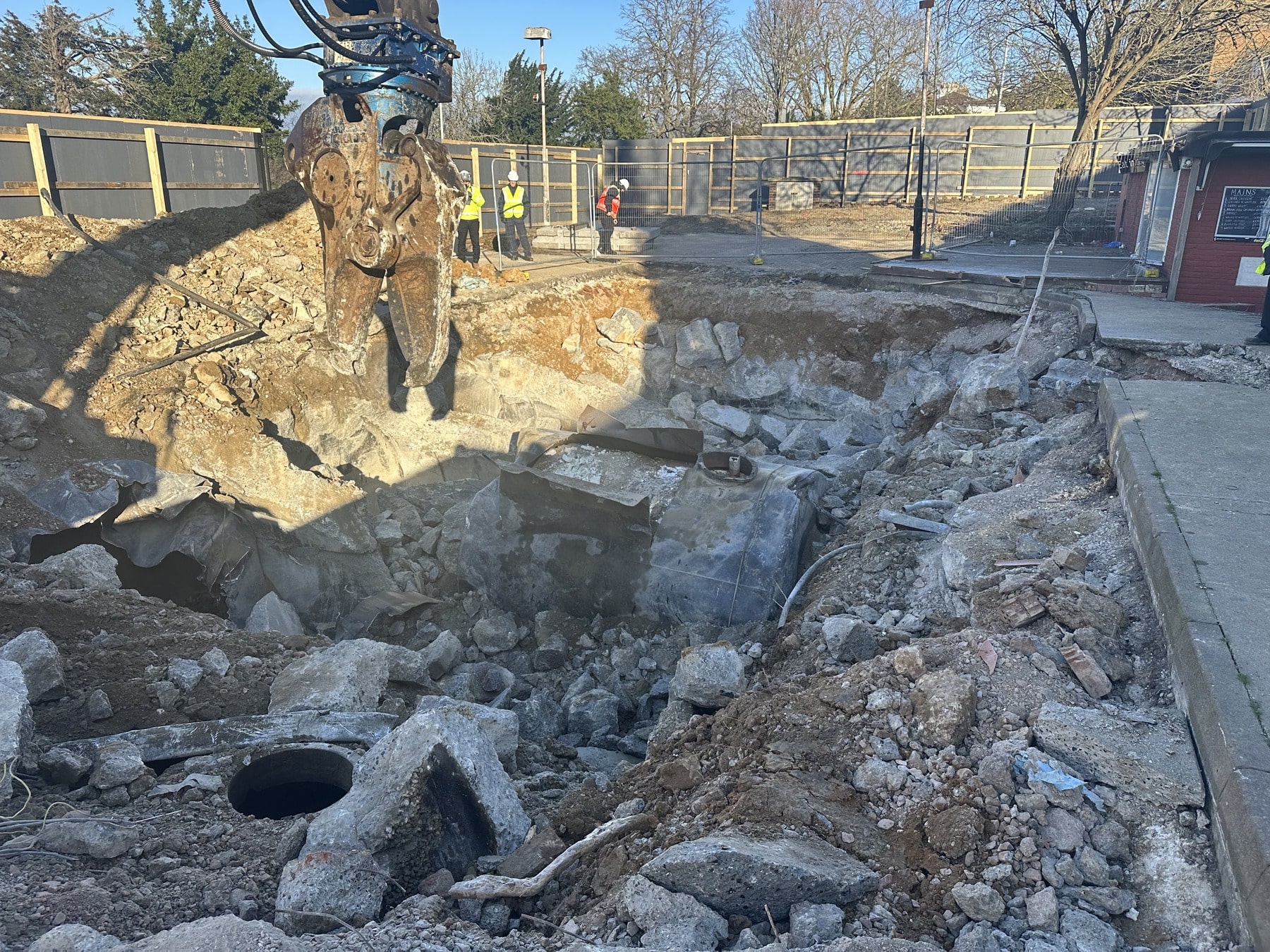Underground fuel tank excavation is not just about digging a lump of metal from the ground; to do it safely requires many special skills. The whole process begins in the office with a thorough study of all available plans, so we can get the best idea possible of what is below ground.
As well as the most recently used tanks and pipe work, there may be old disused tanks that need excavating and services that need to be avoided and/or cut off.

What is underground fuel tank excavation, and why is it necessary?
Underground fuel tank excavation is the process of safely removing buried fuel storage tanks from the ground. This is necessary for various reasons, such as tank replacement, site decommissioning, or addressing potential safety hazards. DP Fuel Tank Services employs special skills and procedures to ensure the safe and efficient excavation of these tanks.
What steps are involved in underground fuel tank excavation, and how does DP Fuel Tank Services ensure safety and environmental compliance?
The process begins with a thorough study of available plans and site surveys, including CAT scanning and soil tests, to gather information about what lies below the ground. This helps identify active and disused tanks, avoid services, and assess potential contamination due to leaks. Contaminated soil is safely disposed of, and clean material is used as a replacement. Tanks are made safe with methods like Nitro-foam inerting to expel potentially explosive fuel/air mixtures. The top of the tank is exposed, and a large hole is cold-cut to allow access for sludge removal and thorough interior cleaning. DP Fuel Tank Services prioritises safety with fully trained personnel, confined space working, safety harnesses, breathing apparatus, and protective clothing.